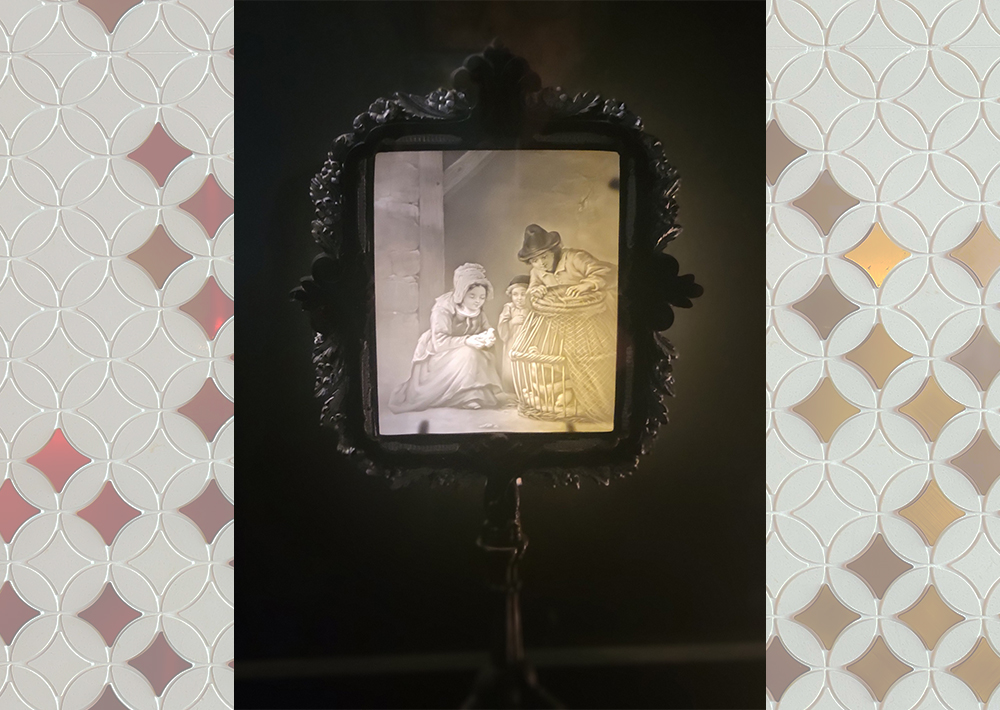
[Image above] It is not just a “pigment” of your imagination—the Forbes Pigment Collection at Harvard Art Museums has more than 2,500 pigment samples. Credit: Tom Scott, YouTube
I only vaguely remember the 2014 announcement by Surrey NanoSystems that its scientists had created the “blackest black” ever to exist, using carbon nanotubes to create a material that absorbs 99.96 percent of light. However, I remember very clearly the outrage from the art community in 2016 when Indian-born British artist Anish Kapoor acquired exclusive rights to the pigment and refused to let any other artist use it.
A battle unfolded when artist Stuart Semple created the “pinkest pink” in retaliation and allowed anyone to buy it except Kapoor (Kapoor got his hands on it anyway). And now this year, Semple released his own version of a very-black pigment he describes as “black hole in a bottle.”
Viewing this situation on a superficial level, it can be difficult to appreciate what all the outrage is about. Black is black is black, right? Well, not quite.
Even though any elementary school child could list you the seven colors that make up a rainbow, each of these colors come in many, many shades, which are greatly determined by the pigment used to produce the color. So, Kapoor was not simply keeping artists from using the color black—he was keeping them from using a unique black that is slightly different from every other black on earth due to the material from which it is made.
When we understand color from this perspective—that the chemical and structural composition of a pigment determines the color you will see—we bring the worlds of art and science closer together.
One place where scientists and artists alike share in the study of pigments is The Forbes Pigment Collection, located in the Straus Center for Conservation and Technical Studies at Harvard Art Museums.
The Forbes Pigment Collection is a collection of more than 2,500 different pigment samples, ranging from the oldest white pigment “lead white” (a mixture of lead and vinegar that was buried in cow dung) to Vantablack, the infamous “blackest black” monopolized by Kapoor.

As pretty as this pigment is, be careful—“lead white” is toxic! Credit: Tom Scott, YouTub
Scientists and artists use the pigments in this collection as standards to help distinguish original paintings from restorations—and forgeries. The most well-known use of the collection for authentication was in 2007, when the collection’s pigments helped disprove three disputed Jackson Pollock paintings. The pigments used in the disputed paintings were created in the early 1980s—yet Pollock died in 1956.
In today’s video, you can learn more about the history of the collection and take a look at some of the unique pigments stored there (read about even more pigments in this Harvard Gazette article). And for some of the pigments, viewing them through a screen like this is probably for the best.
“Some of the pigments are toxic, so we don’t want people touching them, playing with them,” explains Narayan Khandekar, director of the Straus Center, in the video. “Pigments are made of mercury, they’re made of cadmium, arsenic, and so on.”
However, there are downsides to learning about these unique and rare pigments online. Computer screens can display about 16.7 million colors—which is a lot—but screens can only get so bright. Certain colors, like Semple’s “pinkest pink,” are brighter than most computers can display.
The solution? Go out and try to find examples of these pigments in real life—and see just how bright and colorful the world can be!

Credit: Tom Scott, YouTube
Author
Lisa McDonald
CTT Categories
- Art & Archaeology
Related Posts
Celebrating the US Semiquincentennial: Ohio Creativity Trail
December 16, 2025
Lithophanes: Dedicated museum sheds light on these porcelain artworks
November 13, 2025


